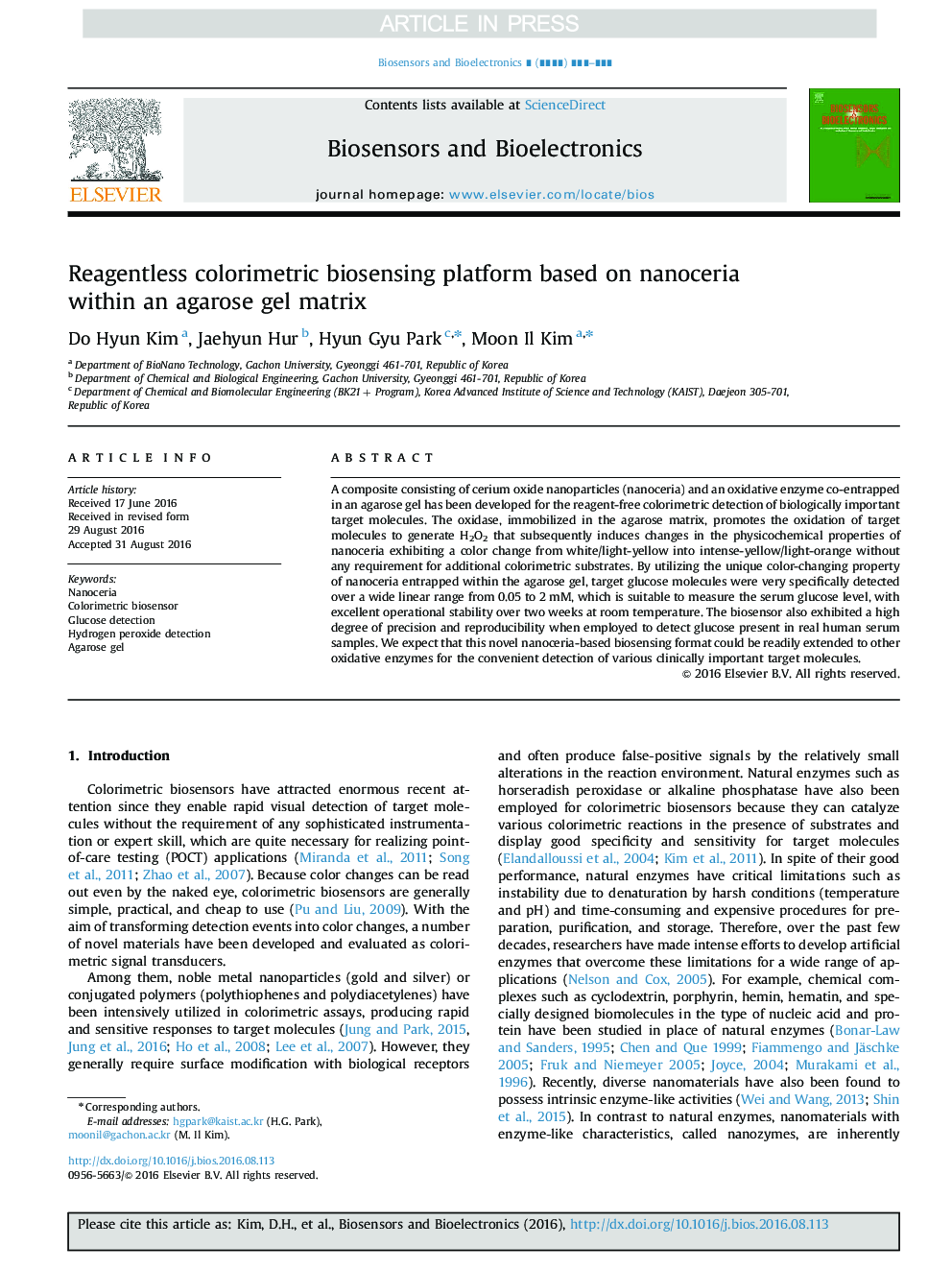| Article ID | Journal | Published Year | Pages | File Type |
|---|---|---|---|---|
| 5031546 | Biosensors and Bioelectronics | 2017 | 8 Pages |
Abstract
A composite consisting of cerium oxide nanoparticles (nanoceria) and an oxidative enzyme co-entrapped in an agarose gel has been developed for the reagent-free colorimetric detection of biologically important target molecules. The oxidase, immobilized in the agarose matrix, promotes the oxidation of target molecules to generate H2O2 that subsequently induces changes in the physicochemical properties of nanoceria exhibiting a color change from white/light-yellow into intense-yellow/light-orange without any requirement for additional colorimetric substrates. By utilizing the unique color-changing property of nanoceria entrapped within the agarose gel, target glucose molecules were very specifically detected over a wide linear range from 0.05 to 2Â mM, which is suitable to measure the serum glucose level, with excellent operational stability over two weeks at room temperature. The biosensor also exhibited a high degree of precision and reproducibility when employed to detect glucose present in real human serum samples. We expect that this novel nanoceria-based biosensing format could be readily extended to other oxidative enzymes for the convenient detection of various clinically important target molecules.
Related Topics
Physical Sciences and Engineering
Chemistry
Analytical Chemistry
Authors
Do Hyun Kim, Jaehyun Hur, Hyun Gyu Park, Moon Il Kim,
